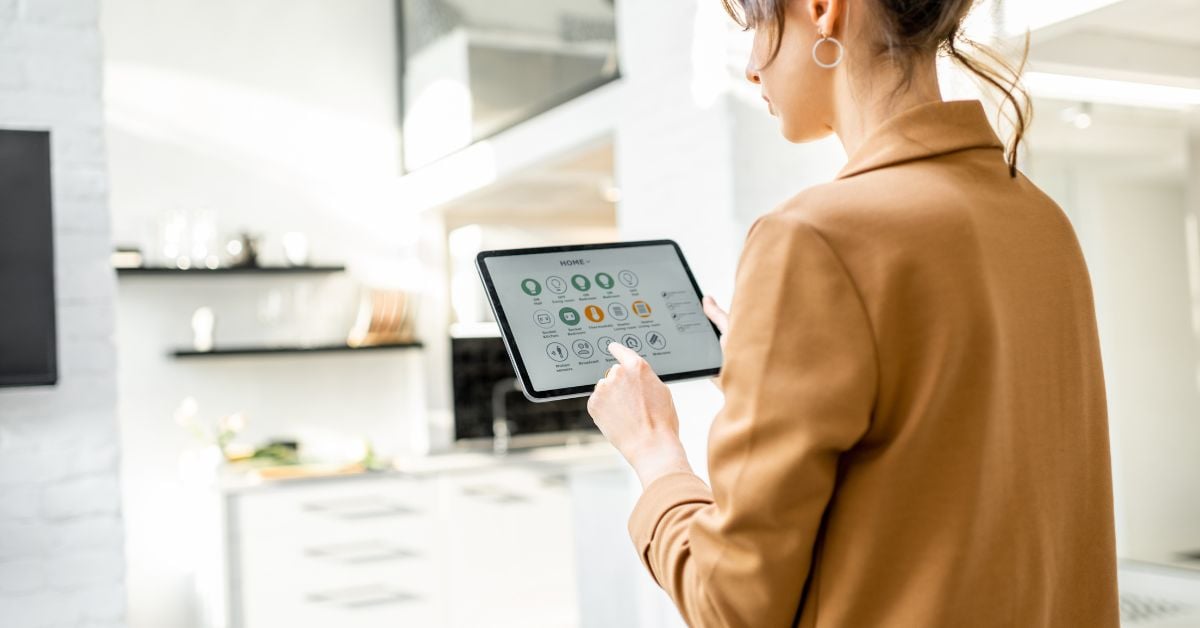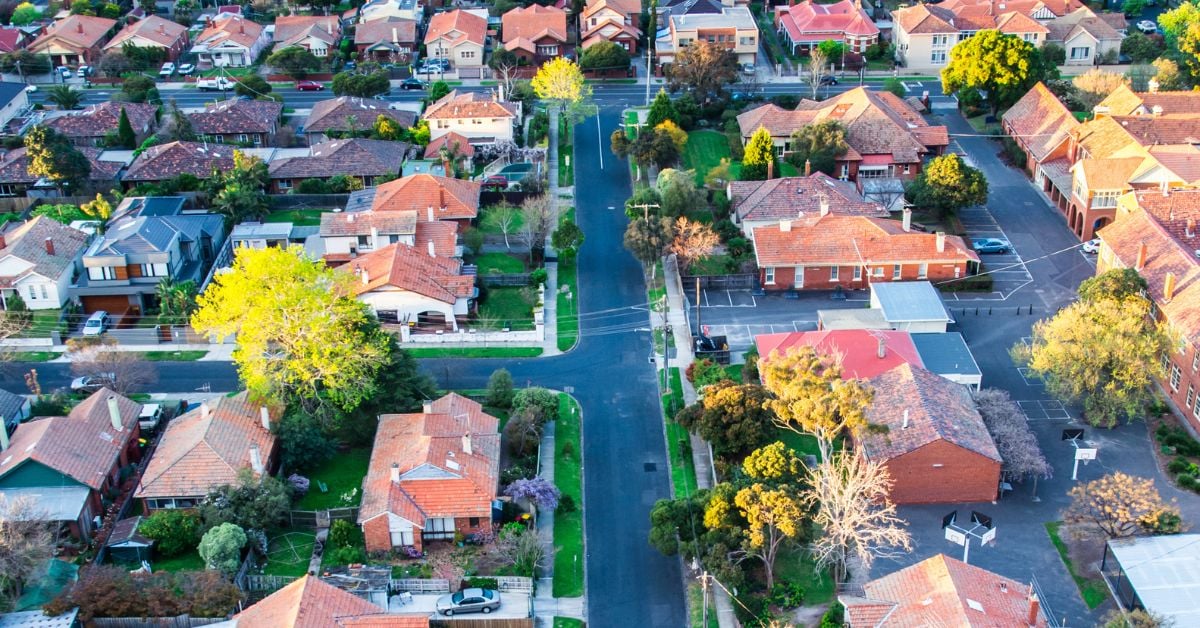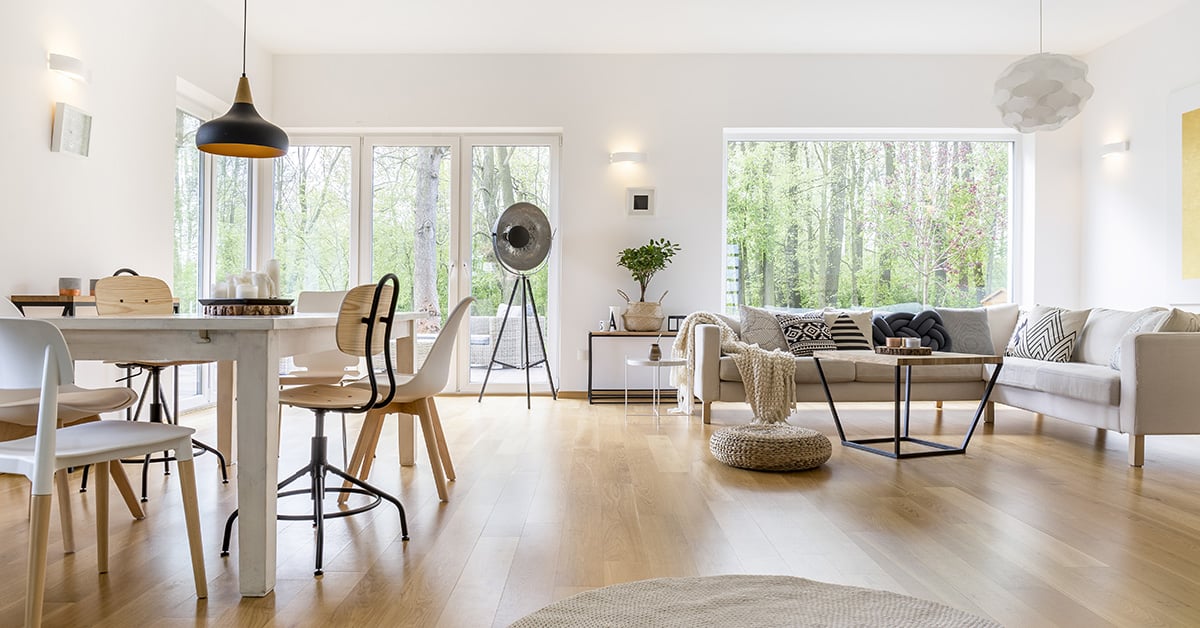How To Create a Smart Home and Why (With Tips)

Smart homes are becoming increasingly popular throughout Australia. But if technology is not your passion, it can be difficult to navigate what this term means and how you can implement it in your own home.
As more homeowners catch on to the trend, this guide will help you understand how to create a smart home and why you should.
What is a smart home?
Simply put, a smart home is the use of technologies to control and automate the home. A basic example is light bulbs, which can be controlled through an app on your mobile device or commanding Google Home to set a timer.
The goal of a smart home is to unobtrusively improve your home, so the less you notice them, the better they are. They are aimed to be completely integrated into your home and lifestyle, with minimal hiccups.
The most common smart home systems that we see in Australia are Google Home or Google Nest, Apple HomePod, and Amazon Echo. There are also many brands that are less well-known by the public, such as Vivint and Winkhub.
The trend of smart home technology is rising, with roughly a quarter of Australians owning a smart home device in 2021. This figure is expected to rise to over 40% in 2023, indicating huge growth in this industry. These features are likely to become increasingly desired by buyers in the market.
How do smart home devices work?
Experts in this field spend their whole life studying how smart home products work and how to improve them, so it is hard to cover the intricacies of smart home technology completely. However, there are a few key things to know if you are interested in creating a smart home.
Smart home technology operates on the principle of the “Internet of Things”. This is a new concept that refers to devices being connected to one another in a form of “network” and being able to communicate with each other to carry out tasks.
The different devices can connect with each other in different ways. The most common way is through wireless network connections or wi-fi, but can also be through radio waves and hard-wiring. Your network can also use a mixture of these things, for example using hard-wiring as a fall-back to when wi-fi is down is particularly popular.
The devices also use “If This Then That” technology, which is exactly as it sounds. The appliances are built with protocols so that if one action happens, a whole sequence of actions will be triggered, making your devices operate together to achieve your command.
The way that you can communicate with your smart home network varies. Most commonly, it is done through voice command, automatic sensors or through a mobile app. Common terminology for voice activated devices are “smart speakers”, and for app activated devices, “smart hub”. A smart hub is often far more comprehensive than a speaker and acts as a “control centre” for the rest of the home.
How much does it cost to build a smart home?
As with most home appliances and devices, there are products to suit every price range. However, the more you spend, the better your smart home will be as your budget is the only real limit to the functionalities of your home.
On the low-cost end of the spectrum, the Google Nest Mini goes for about $80 and is available at most technology shops. You can ask the device questions about the weather or your calendar and it can tell you the answer. It can play music through different speakers and the like. This is the perfect product for experimenting with smart home technology and figuring out how you are likely to use it.
Then, there are products at the higher end. These will most likely be installed by a contractor, either at the time of building the house or afterwards. Either way, the items will need to be installed and set up in the wiring of the house. For example, Z-Wave, offers the largest range of home automation products in Australia from security to lighting to kitchen appliances. This requires a more rigorous installation process and thus, a higher budget.
Why make your home a smart home?
1. Competitive Advantage
If you are considering selling your home in the near future, having smart technologies already implemented in your home will increase your edge against the competition on the market. Buyers, especially slightly younger buyers, are increasingly interested in this type of technology and the fact that it has already been installed is a huge selling point.
Also, as more and more Australians purchase smart home devices, there will be an expectation that your property will have some smart home capabilities.
2. Efficiency
Although the outright cost of smart home technology can be expensive depending on the devices that you install, it can make your money back in terms of efficiencies in power.
For example, appliances can have motion detectors that turn lights off when nobody is in the room. It can also turn off any heating or cooling while nobody is in the house, and turn it on just before you arrive home to save energy. This reduction in energy usage will in turn reduce your energy bills.
3. Convenience
There is no doubt that if you are managing a child, trying to cook dinner and talk on the phone, a voice control activated timer is far easier than setting dials on the oven. Smart home technologies can do this and more, even turning off lights at different ends of the property.
4. Safety and peace of mind
Security is a huge bonus of smart home technology, with motion sensors, cameras and microphones already enabled in the devices. There are also specific security targeted devices to get installed.
There is also greater peace of mind in terms of turning off appliances and light switches. There are devices that will turn off power points if it does not sense movement, creating less chance of a fire.
Tips for creating a smart home from scratch
Start small and expand
The best way not to over-capitalise your smart home technology is to start small and build bigger as you realise what extra functionalities you might need. This way, you can be assured you are not falling for "gimmicky" software, but for technology that does actually improve your home life.
By starting small you have much less to lose, so you can experiment with the type of software you might enjoy. You can decide which brand might be best and what features of your home you would like to automate.
Think about the limitations of your infrastructure
Almost all homes have NBN access across the country, which is a great start to a strong internet connection. However, some areas still have bad connectivity that often fails, particularly those outside of metro areas. There is not much you can do about the infrastructure available to your home, so factor this in when deciding which route to go down for your smart home. Google and the like all need strong wireless connectivity to operate, whereas other systems only need good wiring in the house.
Learn more about your appliances and devices
Of course not all devices and appliances can be linked together to become “smart”. If you have an old fridge, it is unlikely to be able to be connected to smart technology unless you attach it to a smart power point. When implementing your smart home, think about what devices you will be able to use with your smart hub or speaker and whether or not it is worth upgrading them.
Consider your future needs
If you are in a period of transition or you can see you are about to be, consider these changing requirements into your smart home. If you are thinking of growing your family, or perhaps your children will move out, it is important to think how your needs will change throughout this time and how your smart technology will be able to adjust.
If you are interested in knowing how much value smart technology could add to your home, get an expert’s opinion with a property appraisal. A real estate agent can value your house in its current condition and help you map out potential improvements to increase your possible sale price.
DISCLAIMER - The information provided is for guidance and informational purposes only and does not replace independent business, legal and financial advice which we strongly recommend. Whilst the information is considered true and correct at the date of publication, changes in circumstances after the time of publication may impact the accuracy of the information provided. LJ Hooker will not accept responsibility or liability for any reliance on the blog information, including but not limited to, the accuracy, currency or completeness of any information or links.
Share


